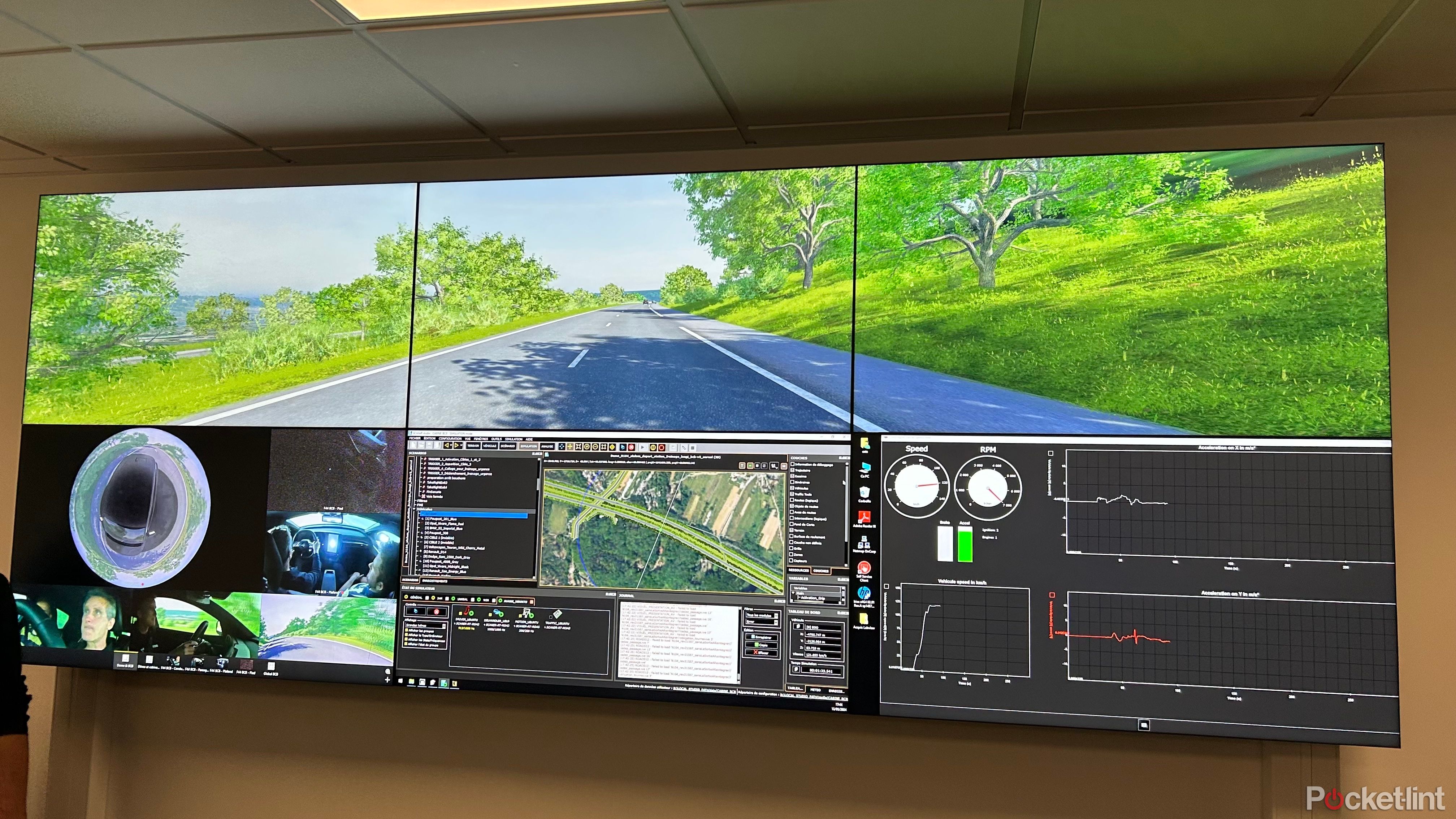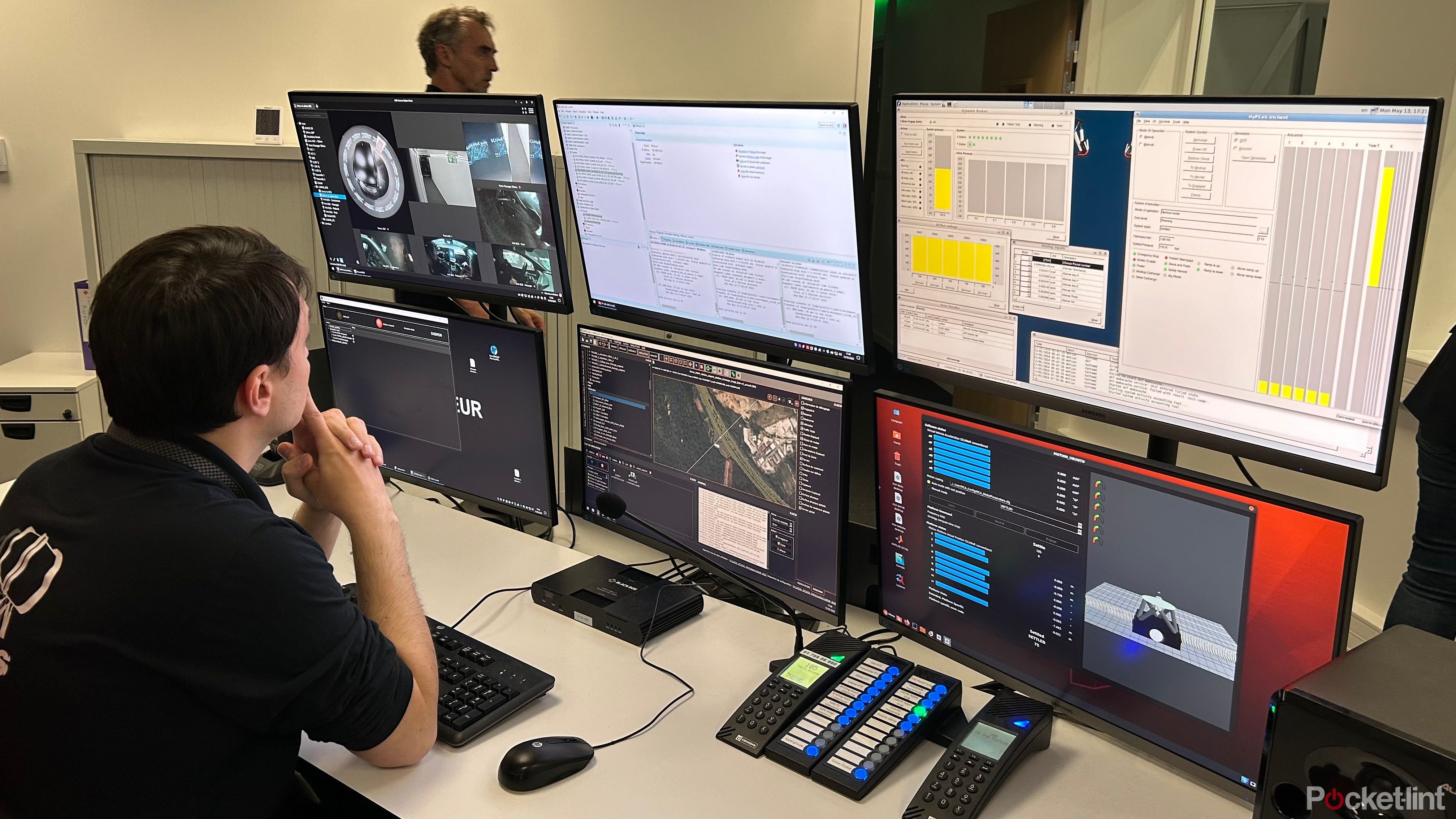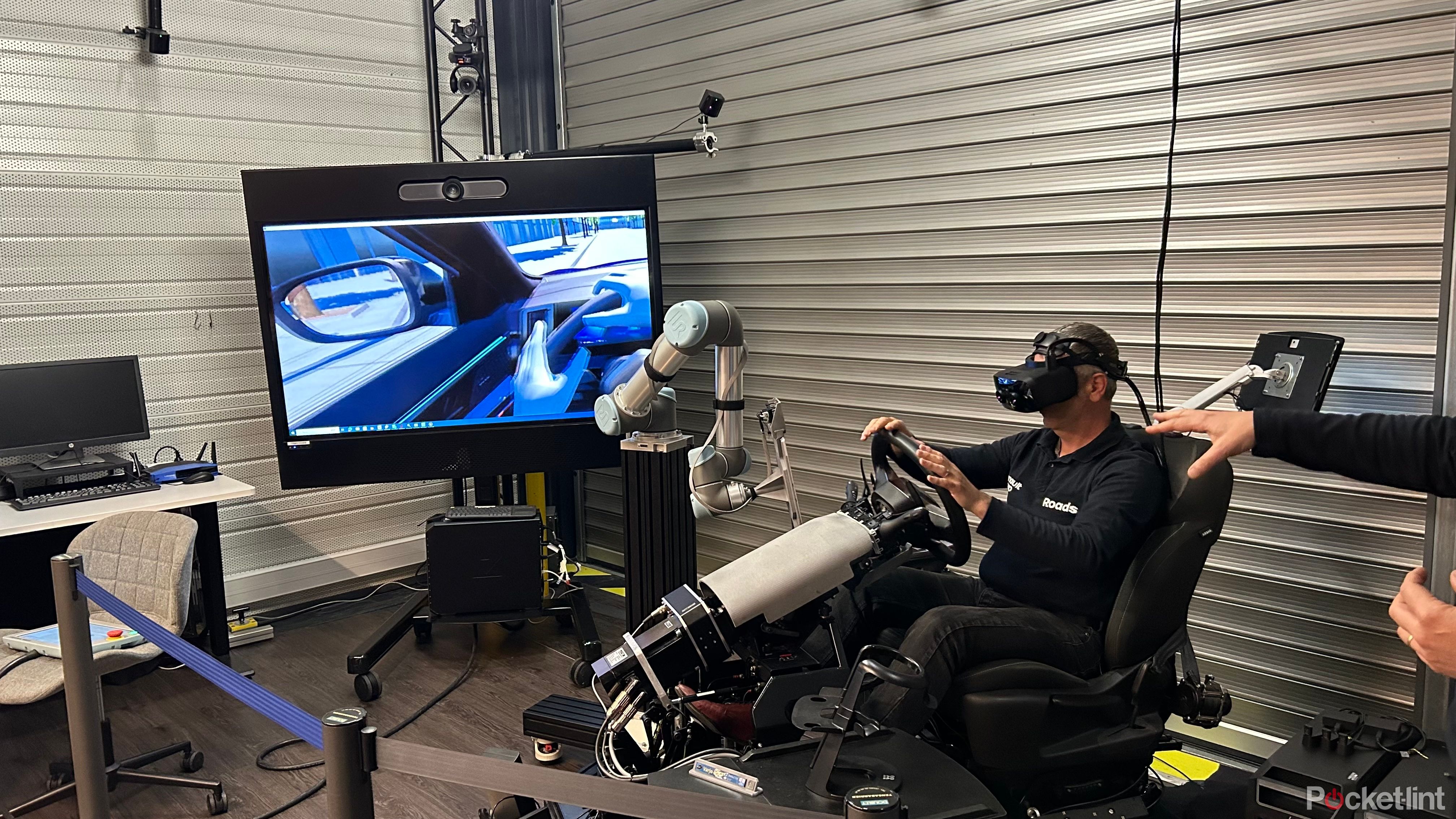Key Takeaways
- Renault’s superior simulator, ROADS, revolutionizes car improvement with the usage of digital driving situations and digital twins.
- The corporate invested €26 million in expertise to hurry up car improvement and scale back prices.
- Along with conventional testing, Renault creates situations in a Situation Manufacturing unit and can be investing in autonomous autos for future technique.
I do love a few of the greatest driving simulation video games, however I’ve just lately seen one thing that makes the likes of Forza Motorsport, Forza Horizon and Assetto Corsa really feel like a poor imitation. That’s primarily as a result of what I’ve seen isn’t a sport that prices a couple of dollars to play in your PS5, Xbox or gaming PC: It’s a full-size simulator owned by French automaker Renault.
I just lately visited Renault’s Technocentre, the place loads of driving goes on, although a lot of it’s performed in a digital setting utilizing simulator tech that you simply’d extra usually anticipate to see at an plane testing or coaching facility.
At this expansive improvement hub, the French carmaker has invested big sums of cash to assist construct its imaginative and prescient for the long run. The expertise permits Renault to arrange any form of driving state of affairs and embody every thing from digital awful drivers by way of to dangerous surfaces for the last word in testing functionality.
How this startup is making EV charging as easy as finding a lamppost
Voltpost plans on making proudly owning an EV simpler by changing road lampposts into chargers.
Spending massive cash
Digital driving world
The corporate has spent round €26 million to construct its state-of-the-art immersive simulation heart that carries the moderately becoming acronym of ROADS (Renault Operational Superior Driving Simulation). What lurks inside a cavernous constructing on the 2,300 sq. meter facility is every thing wanted to recreate and take a look at any form of driving state of affairs. Whereas Renault has splurged within the R&D division, it hopes financial savings will filter by way of in the long term.
What lurks inside a cavernous constructing on the 2,300 sq. meter facility is every thing wanted to recreate and take a look at any form of driving state of affairs.
That is all right down to the best way the middle can scale back car improvement instances, and subsequently prices. The superior tech housed throughout the Technocentre campus shaves off loads of money from designing autos. Central to that is the potential for making a digital twin of autos. Renault engineers can produce a digital model of every thing and something regarding a brand new car, that means the necessity for standard bodily prototypes is tremendously diminished.
The expertise that I’ve just lately seen in operation is amazingly good, with the ROADS simulator itself sitting on an unlimited movable chassis that covers practically 1,400 sq. meters in an enormous purpose-built corridor. Though it’s 12 metres excessive, the beefy carbon fiber simulation container can maintain any of the brand new autos Renault is designing, permitting a totally immersive 360-testing setting. It sits on industrial-strength jacks and slides on 25 meter tracks, creating acceleration of 1G at every axis when it’s in movement.
This 90-tonne creation is kind of one thing to look at, however the worth and return on funding for Renault is within the information being captured inside and on the management desk overlooking the simulator. The sensible factor about all that is that the engineers can recreate completely any street state of affairs with testers sitting inside a full-size prototype of a brand new mannequin, whereas driving down highways and byways created by a rooftop carousel of high-resolution projectors.
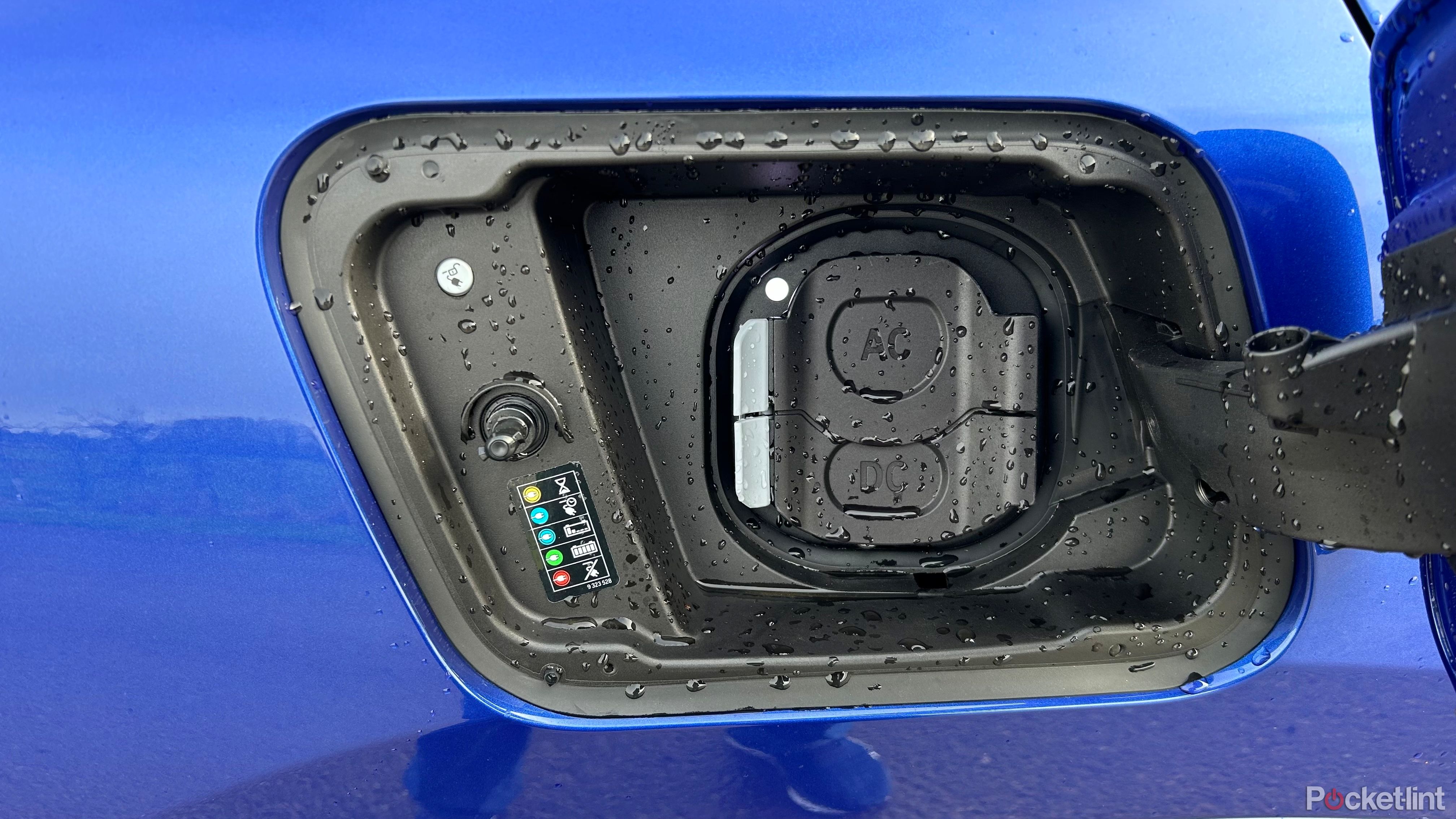
Owning an EV should be easy, but hangups around gas cars are making everything more complicated
Pondering of EVs in a different way than gasoline automobiles might make charging simpler, costs cheaper, and infrastructure extra pleasant.
The digital twin
Information to the Cloud
The massive chunks of information from these real-world driving simulations permits Renault to mix the digital world with the bodily enter and produce a digital twin. What that does is revolutionize the pace with which autos and their part components are developed. In truth, Renault engineers defined that, so environment friendly is the method, in contrast to the outdated days when pre-production components must be created, new automobiles can go to manufacturing utilizing components created instantly from the digital prototypes.
In truth, Renault engineers defined that, so environment friendly is the method, in contrast to the outdated days when pre-production components must be created, new automobiles can go to manufacturing utilizing components created instantly from the digital prototypes.
Including further worth to working this fashion is Renault can monitor a car all through its complete lifecycle. Which means it will possibly supply over the air updates and add in new options and capabilities as testing progresses, which is very essential on the subject of enhancements in security and ergonomics, particularly the place Human Machine Interfaces (HMI) are concerned. Touchscreen anybody?
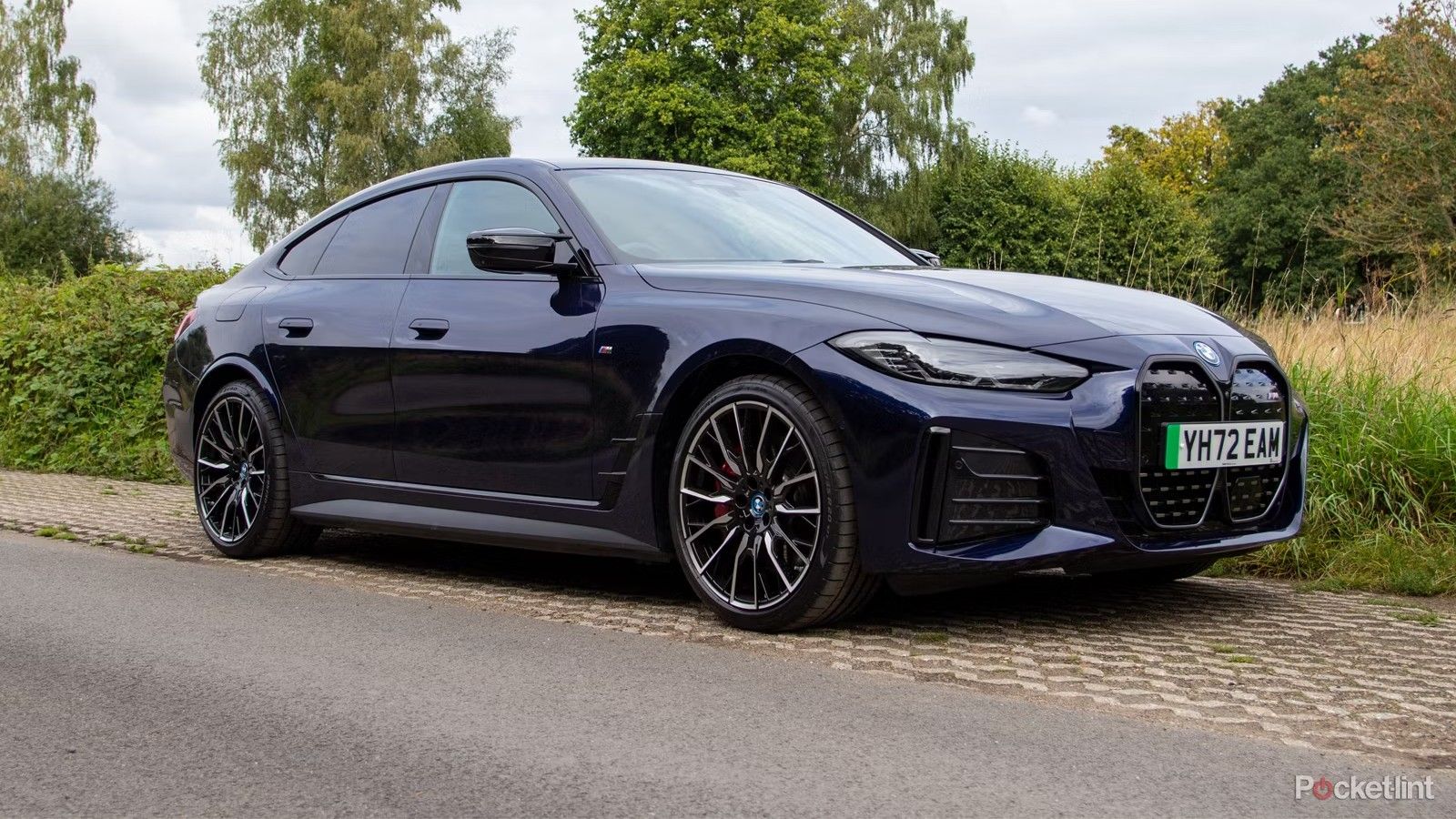
The best electric cars for US roads
These are the perfect EVs you should purchase proper now.
Making a state of affairs
Testing in a digital world
Renault even has a Situation Manufacturing unit, by which a few of its 70 in-house engineers digitally reproduce all method of on a regular basis situations drivers can and do encounter throughout their travels. Once more, all the information gathered is saved within the Cloud and permits a lot speedier improvement in comparison with the moderately extra snails-paced prototyping workflow of yesteryear. In the end, the method ought to make for a much-improved driver expertise, though loads of the data is produced from a digital setting.
Once more, all the information gathered is saved within the Cloud and permits a lot speedier improvement in comparison with the moderately extra snails-paced prototyping workflow of yesteryear.
So, individuals and driving are essential as is the information. However that’s to not say Renault isn’t investing money and time in autonomous autos as nicely. The carmaker used a little bit little bit of time to unveil the long run technique of its driverless autos, as I later discovered by boarding a cool minibus. Through the quick loop across the Technocentre campus, the Degree 4 autonomous individuals mover did a high quality job of stopping at a crossing to permit Renault workers to cross, whereas additionally efficiently navigating previous beneficial prototype autos and tight bends with ease.
I’ve already seen a variant of this bus, developed utilizing the WeMove platform, at CES earlier within the yr, the place it did a powerful job of ferrying showgoers on a barely extra perilous loop of Las Vegas public roads. It’s not quick, which is reassuring in a method, however it’s comfy, with seating for a handful of individuals and provides you an important view of your environment because of a lot of glass.
It’s not quick, which is reassuring in a method, however it’s comfy, with seating for a handful of individuals and provides you an important view of your environment because of a lot of glass.
Since seeing it on the Technocentre, Renault has been utilizing the car to ferry individuals round on the Roland Garros tennis match in Paris. And, regardless of the present and moderately miserly 12-person capability, it’s straightforward to see the enchantment of an autonomous bus if you wish to go away the automotive at dwelling and spend the day quaffing champagne as a substitute.
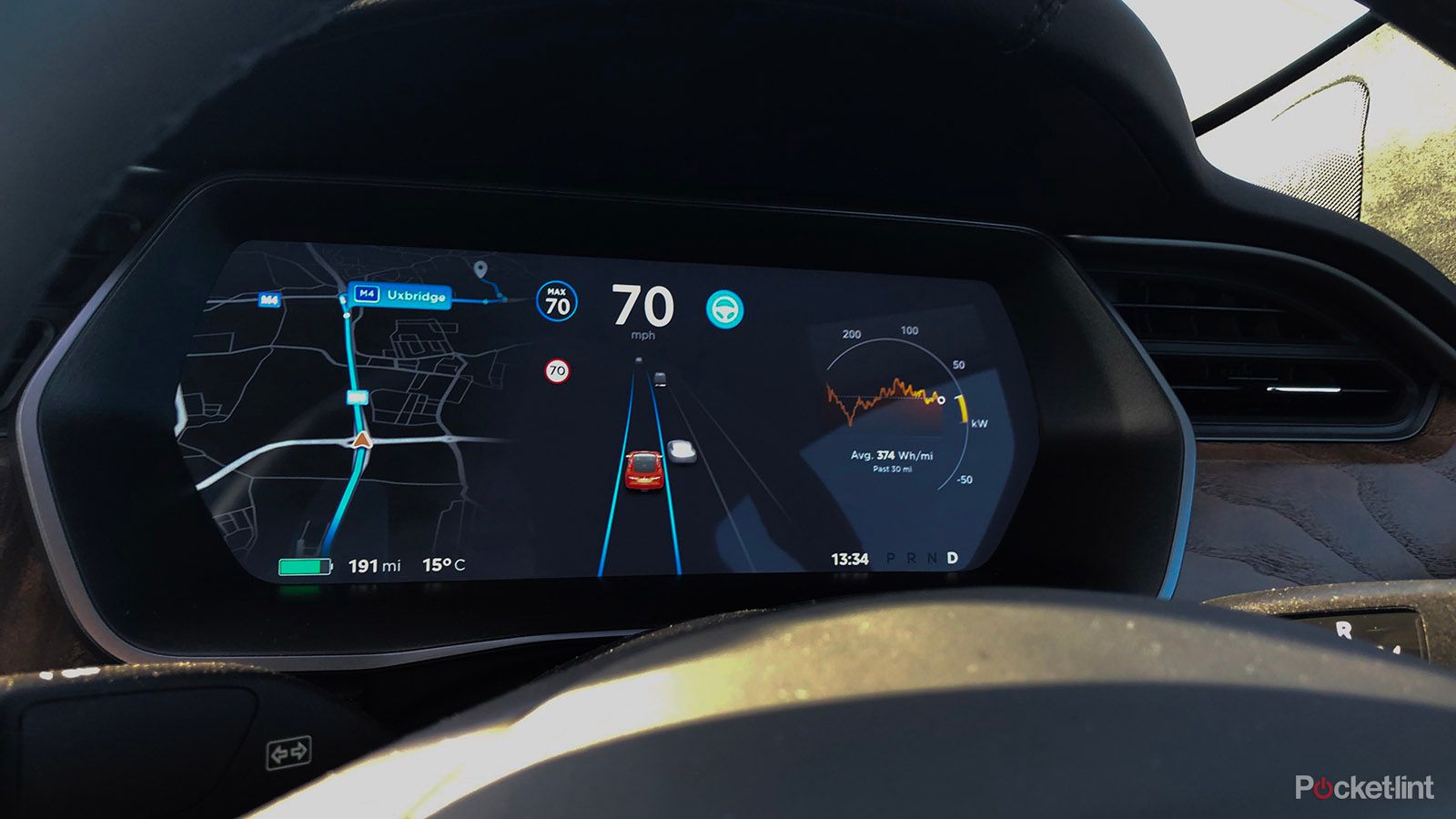
Is Tesla FSD worth $8,000? No, but the subscription might be
It’s going to take practically 7 years to pay full value for FSD at $99 a month.
Trending Merchandise

Cooler Master MasterBox Q300L Micro-ATX Tower with Magnetic Design Dust Filter, Transparent Acrylic Side Panel, Adjustable I/O & Fully Ventilated Airflow, Black (MCB-Q300L-KANN-S00)

ASUS TUF Gaming GT301 ZAKU II Edition ATX mid-Tower Compact case with Tempered Glass Side Panel, Honeycomb Front Panel, 120mm Aura Addressable RGB Fan, Headphone Hanger,360mm Radiator, Gundam Edition

ASUS TUF Gaming GT501 Mid-Tower Computer Case for up to EATX Motherboards with USB 3.0 Front Panel Cases GT501/GRY/WITH Handle

be quiet! Pure Base 500DX ATX Mid Tower PC case | ARGB | 3 Pre-Installed Pure Wings 2 Fans | Tempered Glass Window | Black | BGW37

ASUS ROG Strix Helios GX601 White Edition RGB Mid-Tower Computer Case for ATX/EATX Motherboards with tempered glass, aluminum frame, GPU braces, 420mm radiator support and Aura Sync

CORSAIR 7000D AIRFLOW Full-Tower ATX PC Case – High-Airflow Front Panel – Spacious Interior – Easy Cable Management – 3x 140mm AirGuide Fans with PWM Repeater Included – Black


